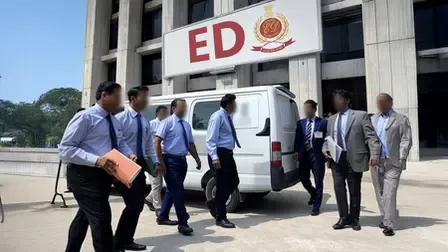Why Did Police Use Lathi Charge on Villagers Protesting SAIL’s Coal Project?

Synopsis
Key Takeaways
- Police used lathi charge against protesting villagers in Dhanbad.
- 10 villagers injured, with one woman in critical condition.
- Protests were against SAIL's Tasra coal project.
- Officials claim most landowners accepted compensation.
- The situation has created a tense environment in the region.
Dhanbad, July 11 (NationPress) Tensions escalated in Asanbani village of Dhanbad on Friday as law enforcement executed a lathi charge to disperse demonstrators opposing the initiation of the Tasra opencast coal project by the Steel Authority of India Limited (SAIL).
At least 10 villagers, including numerous women, sustained injuries during the confrontation. One woman's condition is reported to be critical.
The unrest surged when a SAIL team arrived on-site with five to six JCB machines for land demarcation and leveling efforts.
Hundreds of individuals from Asanbani, Kalipur, and Sarisakundi villages in the Baliapur block convened to resist the initiative, pledging to challenge any attempts to commence the project.
“We will give our lives, but not our land,” echoed the protesters, alleging that SAIL was forcibly seizing their farmland, critical for their livelihoods.
As villagers attempted to obstruct the machines, a clash erupted between them and the police. The situation intensified rapidly, leading to police employing lathis to clear the crowd, causing a stampede-like scenario and resulting in multiple injuries among the villagers. The injured are currently receiving treatment in local hospitals.
The administration justified the police response, asserting that only moderate force was applied to remove those unlawfully obstructing work on legally acquired land.
Official sources indicate that approximately 42 acres of land from the three villages was acquired for the coal project’s expansion. SAIL management contends that over 85 percent of the affected landowners accepted compensation and a fully equipped township has been established for their rehabilitation.
SAIL officials claimed that only a small faction is opposing the project. They also reported that project drivers faced assault attempts when trying to enter the area a few days prior.
Nonetheless, the ongoing standoff has fostered a tense environment in the region.









